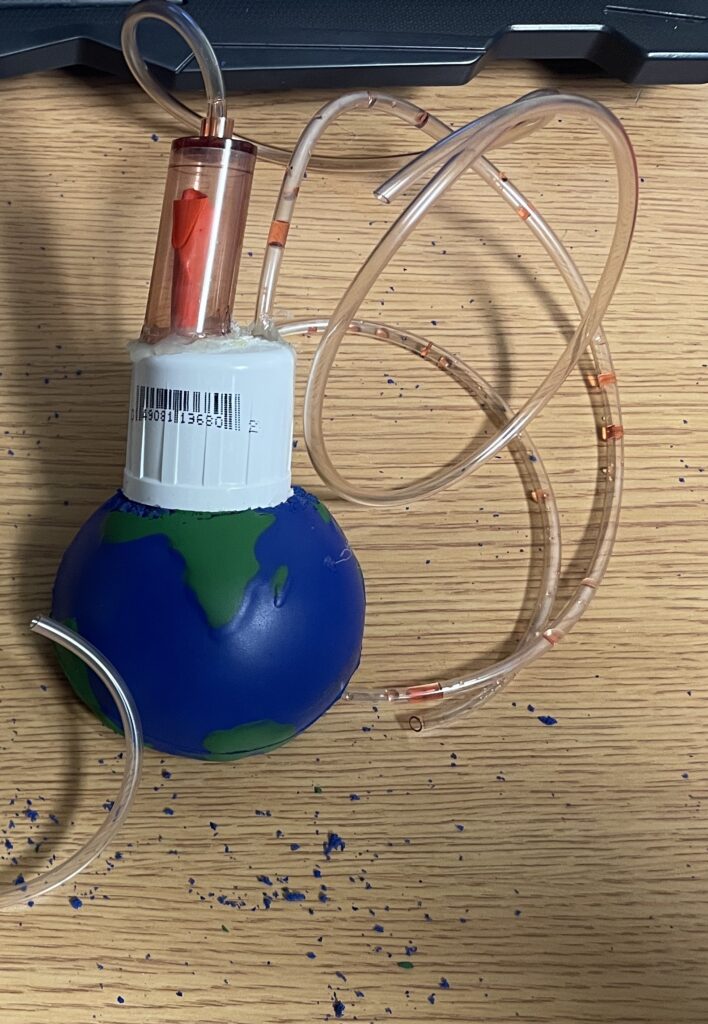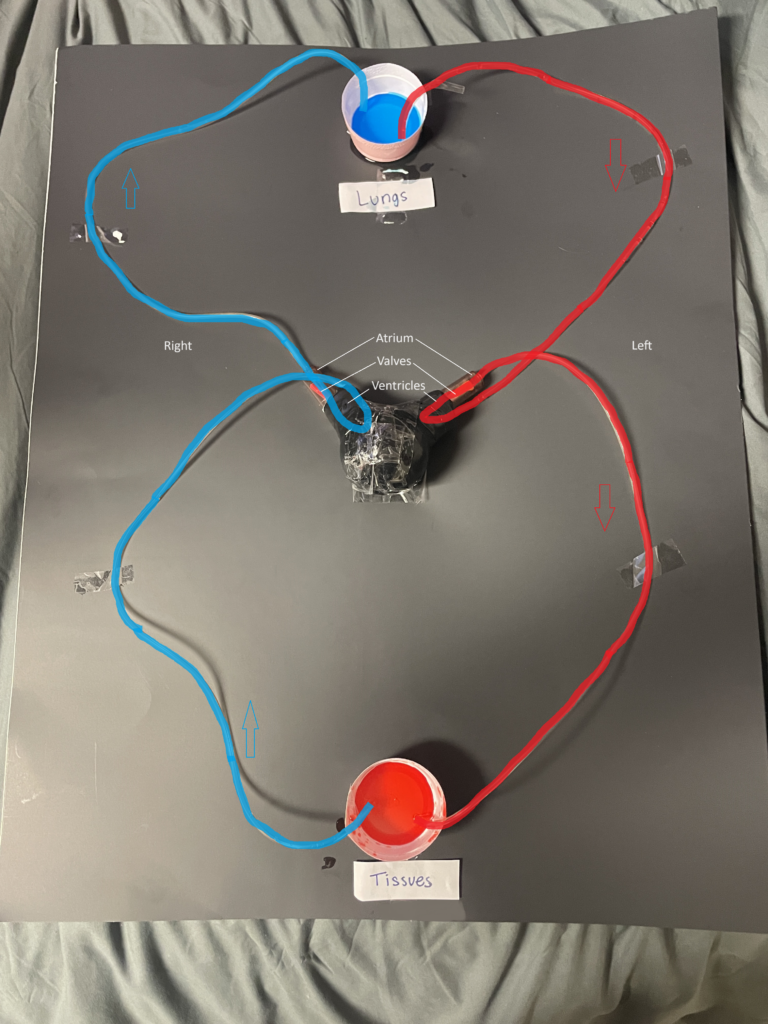



My STEAM Project is on coronary artery disease. The objective covered is to explain the structure and function of the heart and to know the path of blood through the heart and circulatory system.
Coronary artery disease (CAD) is a heart condition where the heart does not get enough oxygen-rich blood. Some causes are cholesterol deposits that build up plaque in the lumen that can inflame the arteries leading to the heart. This reduces blood flow or blockage to the heart causing symptoms like angina or chest pain, shortness of breath, arrhythmias, or a heart attack if it is completely blocked. (Mayo Clinic, 2022). If a cholesterol deposit ruptures, the immune system would respond with blood clotting and block blood flow.
Some ways to evaluate for CAD are an electrocardiogram, echo, stress test, blood work, or cardiac catheterization (Shahjehan, 2023). Some risk factors that could increase the risk of CAD include smoking, diabetes, high blood pressure, high cholesterol, chronic kidney disease, and stress. Men are also found to be at a greater risk than women. Some strategies to lower the risk of CAD would be to keep a healthy lifestyle with habits like exercising often, maintaining a healthy weight, reducing stress, eating a low-fat and low-salt diet, and not smoking (Shahjehan, 2023).
Some treatments that help with CAD would be a reduction of myocardial oxygen necessary for blood flow. This is accomplished with calcium channel blockers or beta-blocking agents to reduce the O2 requirements. Revascularization procedures could restore coronary artery flow in some patients where ischemia or restriction of oxygen and blood flow occurred (Libby & Theroux, 2005).
The art project I composed is a three-dimensional model of the heart and a simple circulatory system. The purpose is to show how blood circulates and explain the heart’s structures. I used a stress ball cut into two parts to resemble the mechanism needed to pump the heart. The IV lines or tubing represents the various blood vessels including the left and right pulmonary veins and arteries, the inferior and superior vena cava, and the aorta. The drip chamber represents the left and right atrium, which are smaller and thinner in muscle compared to the ventricles. The left and right ventricles are white PVC caps. They are thick to show the myocardial tissues that help do the work. The balloons show the various valves. The visible orange balloon in the right atrium resembles the pulmonary valve and the one hidden in the PVC cap is the tricuspid valve. The visible red balloon in the left atrium is the aortic valve and the hidden one is the mitral valve. They are meant to be elastic but can close due to the relaxation and contraction of the ventricles. Electrical tape is used to maintain the high pressure when pumping.
The overall system shows the circulation of blood. It comes from the tissues deoxygenated to the right atrium, through the right ventricle, the pulmonary artery, and to the lungs. Then, the blood becomes oxygenated and goes through the left pulmonary veins, to the left atrium, to the left ventricle, and through the aorta back to the tissues. The purpose of the model is to show how blood is pumped normally. Relating to CAD, I use jello to simulate blood clotting that occurs when blood clumps in the vessels causing blockage. I use peanut butter to simulate cholesterol plaque deposits. Due to technical difficulties, I could not produce a working demonstration, unfortunately. Watch the YouTube video to get an idea of how it works (3rd reference)
References
Libby, P., & Theroux, P. (2005). Pathophysiology of coronary artery disease. Circulation, 111(25), 3481–3488. https://doi.org/10.1161/circulationaha.105.537878
Mayo Foundation for Medical Education and Research. (2022). Coronary artery disease. Mayo Clinic. https://www.mayoclinic.org/diseases-conditions/coronary-artery-disease/symptoms-causes/syc-20350613
Rauf, A. (2019). New working model of heart, Realistic Human Circulatory System for Science Project. YouTube. https://www.youtube.com/watch?v=WufDTu_LpV0
Shahjehan, R. D. (2023). Coronary artery disease. StatPearls [Internet]. https://www.ncbi.nlm.nih.gov/books/NBK564304/

I think your project is a good representation of how oxygenated blood travels from the lungs to the heart and to the tissues and back again. As we all know how important it is to maintain a healthy lifestyle, it’s humbling to see how not doing so directly impacts our health negatively. I was not familiar with coronary artery disease before reading your article, but now I understand that the blockage of the arteries that run to the heart is caused by a buildup of cholesterol. This prevents adequate blood flow from reaching the heart and can cause chest pains.